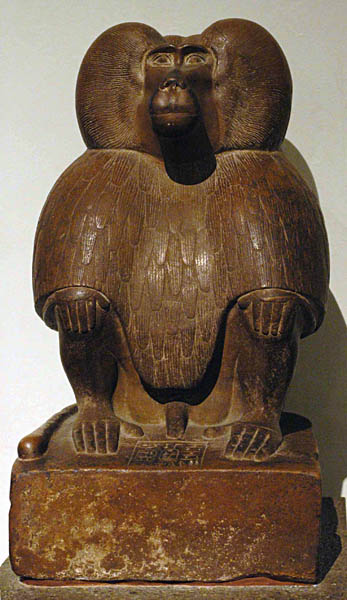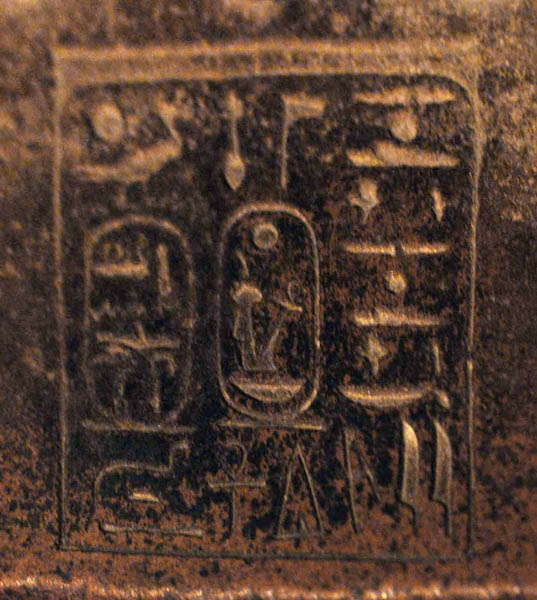
Quartzite statue of a Baboon, dating to the 18th Dynasty, c.1400 BC (EA 38). Thoth,
god of writing and learning/wisdom, manifested as the Baboon and had a cult centre at Hermopolis Magna. Amenhotep III
dedicated a number of colossal Baboon statues there, and this statue also has his cartouche inscribed on the base.
'He who cuts off the face of him
who cuts off your face'
Ancient Egyptians might identify the
baboon with at least three main deities. The first was the sun-god, as
baboons screech at sunrise. Religious papyri often depict baboons adoring
the rising sun. The second deity, who this sculpture is normally thought to
represent, is Thoth, the ibis-headed god of Hermopolis.
Amenhotep III (1390-1352 BC), whose names
are incised on the pedestal of this small figure, in fact set up four colossal
baboon statues at Hermopolis, the centre of Thoth's cult.
However, the baboon is also associated with Hapy, one of the four sons
of Horus. The inscription on this statue suggests that it might be Hapy who
is represented here, as it bears the epithet 'He who cuts off the face of
him who cuts off your face', which is usually identified with the guardian
Hapy.
The figure is carved from the brown quartzite of Lower Egypt so favoured
by Amenhotep III. It has been suggested that the statue may have come from
Amenhotep's tomb, but divine statues in royal burials are more likely to
have been made of wood. It seems more likely that this is one of the huge
number of statues of deities made for Amenhotep's mortuary temple on the
west bank of the Nile.
Height: 68.5 cm

| |

